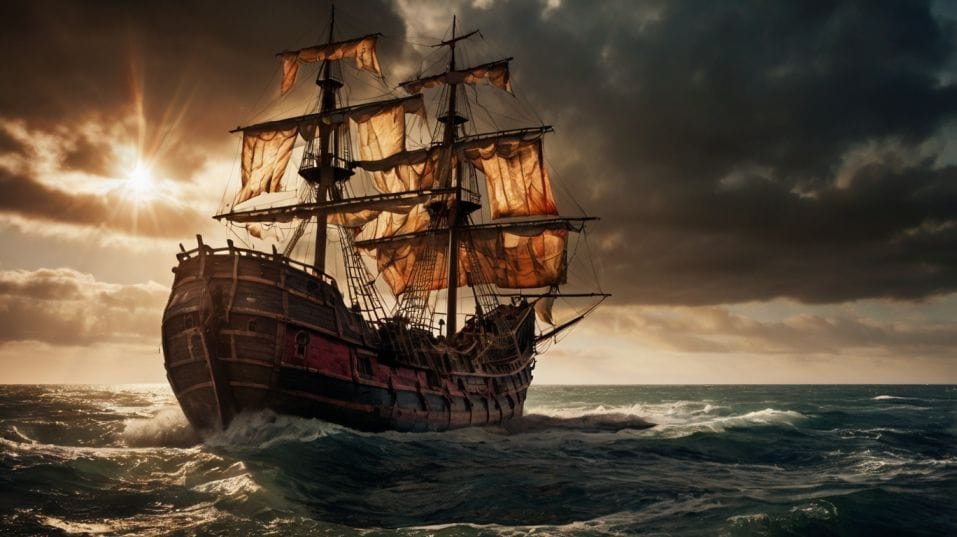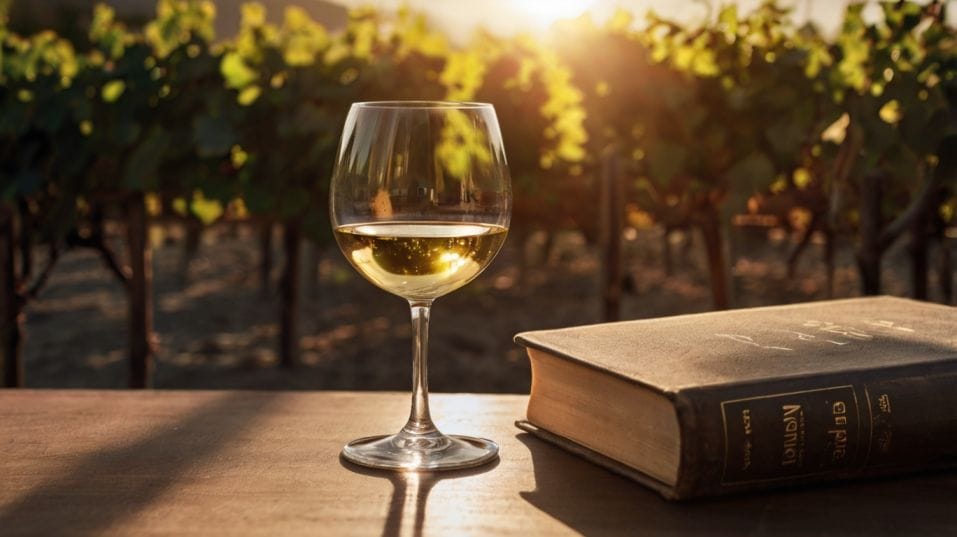Why Pirates Avoided Wine (Sort Of)
Why pirates ditched wine—and what that teaches new drinkers about tasting, trusting, and understanding wine with more clarity and confidence.

Ever wonder why pirates avoided wine? Not because they didn’t want it—but because wine couldn’t survive their world. Heat, chaos, and salt air wrecked its delicate balance. That matters more than you think.
Wine’s fragility isn’t just a quirky history fact—it’s a gateway to tasting smarter. If you’re early in your wine journey, understanding why wine fails in harsh conditions might be the clearest clue for how to help it thrive in your glass.
Wine Isn’t Built to Survive Everything—That’s the Point
Unlike beer or spirits, wine is biologically unstable. It’s alive. That’s part of what makes it captivating—and part of what made it useless on a pirate ship.
Imagine barrels stored in blazing heat, sloshed around for weeks, exposed to salt air and unclean water. Wine couldn’t stay intact under those conditions.
Without glass bottles, corks, or climate control, the fine balance between acid, fruit, and structure would collapse. What was bright and expressive on land became flabby, sour, or flat at sea.
So pirates turned to rum: high-proof, consistent, and practically indestructible. They didn’t have time for nuance. They needed reliability.
But you’re not drinking on a pirate ship. You’re tasting in a world where conditions can be adjusted, temperature can be managed, and you want nuance.
Understanding wine’s fragility isn’t just historical trivia—it’s a reminder that the good stuff demands presence and care.
The Best Wines Ask for a Little Attention
Wine can’t shout for your attention the way spirits or beer do. It doesn’t punch its way onto your palate. It opens slowly, and sometimes it hides. And that’s exactly why it becomes more rewarding the more you show up for it.

Why Conditions Matter
Temperature, for instance, isn’t a small detail. Serve a great Chardonnay ice-cold and you won’t taste its depth. Let a delicate Pinot Noir warm too much, and all you get is a soft blur. A few degrees in either direction changes everything.
What Oxygen Does
Oxygen matters, too. A young wine that seems closed or harsh might just need ten minutes in the glass. Or an hour in a decanter.
Even swirling makes a difference. It doesn’t just “look fancy.” It helps volatile aromatics rise, softens texture, and encourages the wine to reveal itself.
These aren’t rituals for their own sake. They’re tools. The more you play with them, the better your instincts get.
You’ll learn when to hold back, when to coax, and when to give a wine space. You stop waiting for it to be impressive, and start listening to what it’s trying to say.
Contrast Builds a Better Palate
One of the reasons pirates loved rum is the same reason many new wine drinkers find wine confusing: consistency. Rum is always rum.
Wine, by contrast, shifts with grape, soil, season, age, and even mood. It isn’t always familiar, and that’s the point.
Explore the Edges
If you want to build a better palate, don’t chase more of what you already like. Chase contrast. Drink opposites. If you like cool, lean whites, try something oily and warm.
If you favor young reds, open one that’s spent ten years in bottle. It’s not about right or wrong—it’s about mapping your own sensory terrain.
Use Contrast as a Teacher
That’s how you develop more than preference. You develop language. You start to understand why you like a wine. Is it the bracing acidity? The plush texture?
The savory edge? These details emerge not when you stick to your comfort zone, but when you taste across boundaries.
Don’t worry about remembering grape names or memorizing vintages. Just aim to taste with curiosity. Try two wines side-by-side. Pay attention to what each does in your mouth. That’s how confidence grows: through experience, not expertise.
Trust Starts with Texture
If you’ve ever frozen up while someone named ten fruit notes in a single sip, take this to heart: you don’t need to taste raspberry or fig or tobacco to understand wine. You just need to feel what it’s doing.
Texture Is Your First Tool
Start with texture. It’s more consistent and more revealing than aroma. Is the wine sharp and linear, or round and creamy? Does it grip your tongue or glide across it? Is there weight, lift, tension, ease?
Texture is where many of the biggest wine clues live. Crisp, mouthwatering acidity? That’s structure. Astringency? That’s tannin. Silkiness?
That’s time, technique, or grape. Once you get good at reading texture, you can start layering in other impressions: salinity, bitterness, minerality.
And yes—those are real. No, they don’t all need to be named perfectly. What matters is whether you notice them. The moment you start noticing more, wine starts giving more back.
Flaws Aren’t Always Flaws
This is where things get real. Some of the most memorable wines you’ll taste might seem strange at first. A little funk, a little cloudiness, maybe even a hit of something you can’t quite place—earth, smoke, crushed herb, barnyard.
Distinction Over Perfection
Not every wine is polished. Nor should it be. In fact, many traditional winemaking methods—especially low-intervention ones—let a little wildness into the bottle. That unpredictability is part of the charm.
So when you come across something unexpected, don’t reject it too fast. Ask instead: Is this flaw, or is this style? There’s a huge difference between a wine that’s unbalanced and one that’s simply unfamiliar.
The more you taste, the more you’ll learn to tell the difference—and the more comfortable you’ll get exploring outside the clean, commercial middle.
Stop Outsourcing Your Taste
It’s easy to get hooked on scores, buzzwords, “Top 10” lists, or sommelier picks. And while those can be useful starting points, they can also stall your growth.
Because every time you lean on someone else’s opinion, you’re not building your own.
Ask Better Questions
If you want to taste with confidence, you have to own your impressions. That means slowing down. That means revisiting bottles.
That means tasting not just what a wine is, but how it makes you feel—how it changes with time, temperature, or food.
Ask better questions:
- What was different about this wine on day two?
- Did it taste better with salty food or rich food?
- Was the second glass more expressive than the first?
These questions help you move from “Did I like it?” to “Why did I like it?” And that shift—from reaction to reflection—is where real wine fluency begins.
Final Thoughts: Try Something That Might Fail
Pirates didn’t drink wine because wine couldn’t handle the chaos of the sea. It was too unstable, too reactive, too demanding. But that’s also what makes it powerful.
Wine reflects where it comes from. It reacts to air, to time, to your attention. It invites you to meet it halfway. And the more present you are, the more it offers back.
So don’t just drink wine—engage with it. Open a bottle you’re unsure about. Taste it slowly. Revisit it the next day. Pour it in a better glass. Give it space. Let it surprise you.
Because every time you tune in—not just to flavor, but to feel—you’re learning a little more. You’re building instincts. You’re becoming fluent.
Try something new tonight. Not because it’s trendy, but because it challenges what you think you know. That’s how you go from liking wine to understanding it—and eventually, to loving it in a way that sticks.




